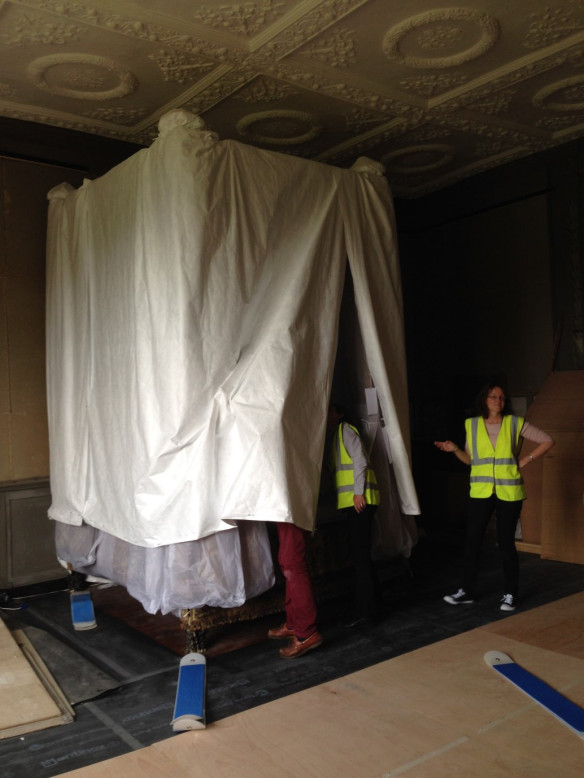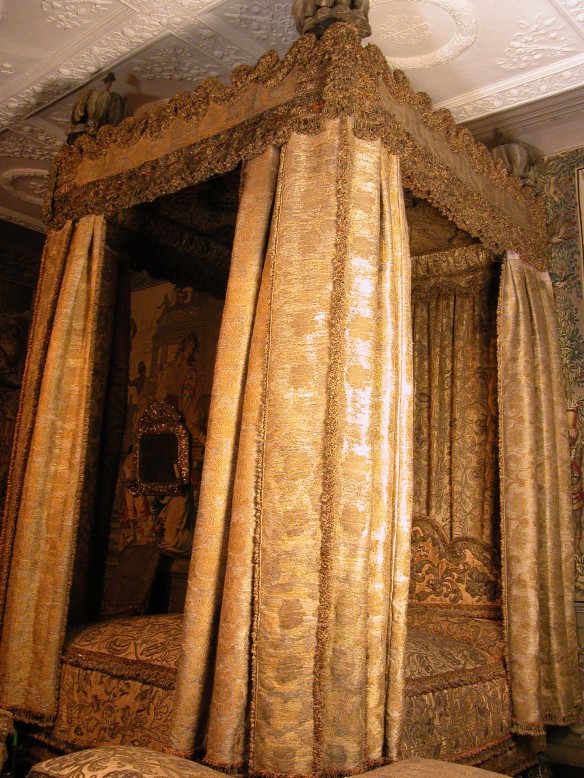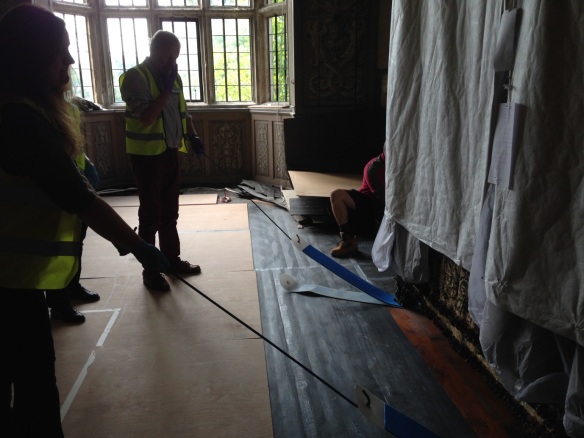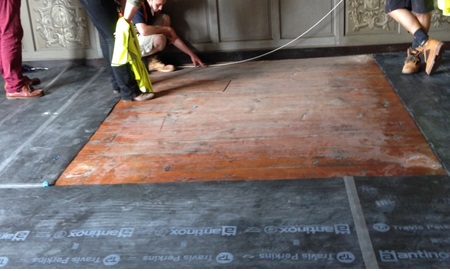From 2011 to 2013, Royal Oak supporters raised $1.25 million to support the conservation of Knole’s ballroom and its contents. Knole is one of the Trust’s most spectacular properties – it’s a sprawling estate with hundreds of rooms, its own deer park and a profound history tied to some of England’s most important cultural figures. We are proud to help protect such a special place forever, for everyone.
The preservation work at Knole is ongoing, and the hardworking team at its conservation studio is maintaining a fascinating blog about their progress.
By the Knole Conservation Studio
With the conservation work going in the showrooms at Knole our various contractors need ever changing access to our spaces. This means taking off paneling, lifting floorboards and crawling through attics to make sure they can do everything they need to.
Most historic properties like Knole are full of large and vulnerable furniture that, in some cases haven’t left the rooms that they are in for decades. During the work many of these items are boxed in and protected. This is much simpler than having to dismantle them to get them out of the way. It’s also much safer for the objects, limiting the amount of handling that they have to go through.
Tables, marble table tops and a harpsichord have all been safely wrapped and boxed in while work carries on around them. One of the most vulnerable items that has undergone this treatment is the King’s Bed. This is one of two state bed’s at Knole (along with the James II Bed in the Venetian Bedroom) and one of the most spectacular and important objects in the collection. It was most likely also made for James II when he was still the Duke of York. It has a fabulous mix of silver and gold thread and is topped with ostrich feathers.
The last time it left the King’s Room was back in the 1970s when a huge amount of work went into restoring the bed. The hangings and fabric were all taken up to what is still known as the Needlework room to be worked on by a mixture of volunteers and professionals. The whole process took about 13 years and resulted in the most spectacular state bed which still shines in its special environmentally controlled room.
Because the textile and metal thread is so vulnerable, special care was needed to make sure it was protected. Specialist conservators visited Knole at the beginning of the year to help wrap the bed in protective acid free tissue and Tyvek coverings. This all helps keep the light and dust off while windows are exposed and work goes on around it. The incredibly fragile ostrich feather plumes were also removed and have gone to the Needlework room where they were worked on in the 1970s.

The King’s Bed in protection. The delicate ostrich plumes have been removed and are in separate storage.
It has sat unmoved since work began in that space but last week the moment came when we finally needed to move it. More specialist conservators were on hand to assist with the move.
Because of the height, weight and fragility of the bed we were unable to lift the bed fully. The safest way to move and object like this is to slide it by inches. By lifting the bed the tiniest amount from the ground (with the help of many hands) special ‘sliders’ could be slipped under the After the bed was mounted on sliders, several people took up the poles to begin moving.
Textile conservators were on hand to look after the bed hangings and hold them out of the way while members of the house team, contractors and conservators all pitched in to help with the move. With observers keeping an eye on the top heavy and fragile bed it was slowly moved across the room by dragging the sliders.
This was all done under the keen eye of conservators. The whole process took no more than an hour and allows our contractors to crack on with their vital work in the showrooms.
All in all the move went without a hitch, something to be thankful for when moving such a huge and delicate object!







